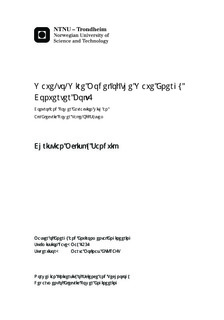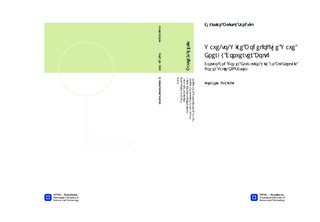| dc.contributor.advisor | Molinas, Marta | nb_NO |
| dc.contributor.author | Sandvik, Christian Mclisky | nb_NO |
| dc.date.accessioned | 2014-12-19T13:53:19Z | |
| dc.date.available | 2014-12-19T13:53:19Z | |
| dc.date.created | 2012-11-08 | nb_NO |
| dc.date.issued | 2012 | nb_NO |
| dc.identifier | 565889 | nb_NO |
| dc.identifier | ntnudaim:7903 | nb_NO |
| dc.identifier.uri | http://hdl.handle.net/11250/257281 | |
| dc.description.abstract | Fred Olsen is currently testing their latest wave energy converter outside of Falmouth Bay in England, preparing it for commercial exploitation at the Wavehub-project. Previous studies have shown that this device has potential for increased power extraction using reactive control, but so far these investigations have focused on the hydrodynamics of the device and on reducing the peak-to-average power ratio while omitting the effect of the electric power take off system. This thesis shows the development of the hydrodynamic model of the device as well as a detailed model of the all-electric power take-off system consisting of a permanent magnet synchronous generator, inverter and DC-link. Vector Control is used to control the Permanent Magnet Synchronous Generator, and field weakening control of the generator is applied in order allow over-speed operation. Time domain wave-to-wire simulations are performed to evaluate the power take off capabilities of the modelled wave energy converter with different control parameters. When tuned according to approximate complex conjugate control the accumulated average generator losses become large, giving a very low overall system efficiency. Optimal control with respect to electrical output power is found to be with low added mass, and when compared to pure passive loading a 1% increase in annual energy production is achieved. The main factor that reduces the effect of reactive control is found to be the minimum load-force constraint of the device, which cannot be lower than 1 ton. Example simulations on a device with different force constraint are performed which verifies this characteristic.These results suggests that the Bolt2 has limited potential for increase in power extraction by implementing reactive control. The analysis in this thesis is nevertheless valuable, as it demonstrates how a wave-to-wire model can be used for power take-off investigations, annual energy production estimations and evaluations of different control techniques. | nb_NO |
| dc.language | eng | nb_NO |
| dc.publisher | Institutt for elkraftteknikk | nb_NO |
| dc.subject | ntnudaim:7903 | no_NO |
| dc.subject | MTENERG energi og miljø | no_NO |
| dc.subject | Elektrisk energiteknikk | no_NO |
| dc.title | Wave-to-Wire Model of the Wave Energy Converter Bolt2: Control and Power Extraction with an All-Electric Power Take-Off System | nb_NO |
| dc.type | Master thesis | nb_NO |
| dc.source.pagenumber | 158 | nb_NO |
| dc.contributor.department | Norges teknisk-naturvitenskapelige universitet, Fakultet for informasjonsteknologi, matematikk og elektroteknikk, Institutt for elkraftteknikk | nb_NO |

